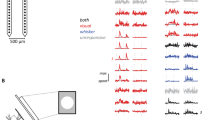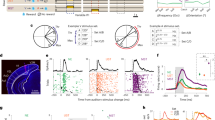Abstract.
The spatial register of the different receptive fields of multisensory neurons in the superior colliculus (SC) plays a significant role in determining the responses of these neurons to cross-modal stimulus combinations. Spatially coincident visual-auditory stimuli fall within these overlapping receptive fields and generally produce response enhancements that exceed the individual modality-specific responses and can exceed their sum. Yet, in this context, it has not been clear how "spatial coincidence" is operationally defined. Given the large size of SC receptive fields, visual and auditory stimuli could be within their respective receptive fields even when there are substantial spatial disparities between them. Indeed, previous observations have raised the possibility that there may be a second level of determinism in how SC neurons deal with the relative spatial locations of within-field cross-modal stimuli; specifically, that multisensory response enhancements become progressively weaker as the within-field visual and auditory stimuli become increasingly disparate. While the present experiments demonstrated that SC multisensory neurons have heterogeneous receptive fields, and that the greatest number of impulses evoked were by stimuli that fell within the area of cross-modal receptive field overlap, they also indicate that there is no systematic relationship between cross-modal stimulus disparity and the magnitude of multisensory response enhancement. Thus, two within-field cross-modal stimuli produced the same proportionate change (i.e., multisensory response enhancement) when they were widely disparate as they did when they overlapped one another in space. These observations indicate that cross-modal spatial coincidence can be defined operationally by the borders of an SC neuron's receptive fields regardless of the size of those receptive fields and/or the absolute spatial disparity between within-field cross-modal stimuli.
Similar content being viewed by others
Author information
Authors and Affiliations
Additional information
Electronic Publication
An erratum to this article is available at http://dx.doi.org/10.1007/s00221-002-1069-x.
Rights and permissions
About this article
Cite this article
Kadunce, D.C., Vaughan, W.J., Wallace, M.T. et al. The influence of visual and auditory receptive field organization on multisensory integration in the superior colliculus. Exp Brain Res 139, 303–310 (2001). https://doi.org/10.1007/s002210100772
Received:
Accepted:
Issue Date:
DOI: https://doi.org/10.1007/s002210100772




